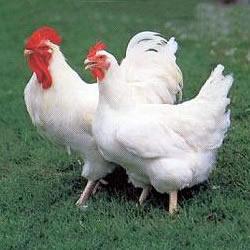Welcoming a batch of newly-hatched chicks into your life is an exciting experience, but determining their gender can be quite a challenge.
While mature hens and roosters are easily distinguishable, sexing young chicks requires observation and understanding of their developing characteristics. This guide aims to help new chicken parents identify the differences between hens and roosters as their chicks mature, providing valuable insights into their physical traits, behavior, and more.
Egg Laying
The most apparent distinction between hens and roosters is their ability to lay eggs. However, this characteristic only becomes evident when the chicken reaches around six months of age. Before that, it’s necessary to consider other indicators to determine their gender accurately.
Combs and Wattles
Observing the combs and wattles can provide valuable clues. Both hens and roosters have combs, but as cockerels mature, their combs become larger, brighter, and more pronounced compared to the pullets.

In the photo, the male (rooster) is the chicken on the left and the female (hen) is the one on the right. Notice the difference in the size of comb and wattles and the tail feathers. Males have a larger comb and wattles. Their tail feathers are pointed, while those of the female are rounded.
Roosters also develop larger wattles, which are the elongated fleshy skin beneath the beak that aids in temperature regulation during warmer weather.
Feathers

Examining various feathers on the chicken can also help you tell the difference between hens and roosters.
Neck feathers, known as hackle feathers, are rounder and shorter in hens, while roosters have longer and pointier hackle feathers.
Tail feathers can vary among breeds, but roosters typically have pointier, longer, and more vibrant tail feathers, often displaying multiple colors.
Additionally, roosters develop long saddle feathers along their back towards the tail, which are pointed by the age of three months, while pullets have rounded saddle feathers.
Behavior
Behavioral traits can offer valuable insights into a chicken’s gender.
Roosters tend to exhibit greater stamina and strength compared to hens. They are naturally more assertive and can display bossy behavior even from a young age.
As roosters mature, they may challenge each other, raising their hackle feathers in displays of dominance.
And, of course, roosters are known for their iconic morning crowing with a resounding cock-a-doodle-do!
Leg Size
Leg size is another characteristic to consider when distinguishing between hens and roosters.
Male chickens generally have thicker legs than females. In some breeds, roosters develop pointed, sharp spurs above their toes.
At six months old, roosters’ spurs are typically less than a third of an inch long, but they can grow up to an inch or longer as they age.
It’s important to note that roosters use their spurs for defense, which can be a concern if they exhibit aggressive behavior. Safe removal methods are available for those who wish to remove spurs.
Understanding the differences between hens and roosters is essential for new chicken parents.
By observing various physical traits, including combs, wattles, feathers, leg size, and behavior, you can gradually determine the gender of your chicks as they mature.
Remember, it may take up to 16 weeks or more before the gender becomes definitively apparent.
Enjoy the journey of raising your chickens and embracing the unique characteristics each hen and rooster brings to your flock. Also, don’t forget to give your feathered babies a natural dust bath to help keep them parasite and lice free!















